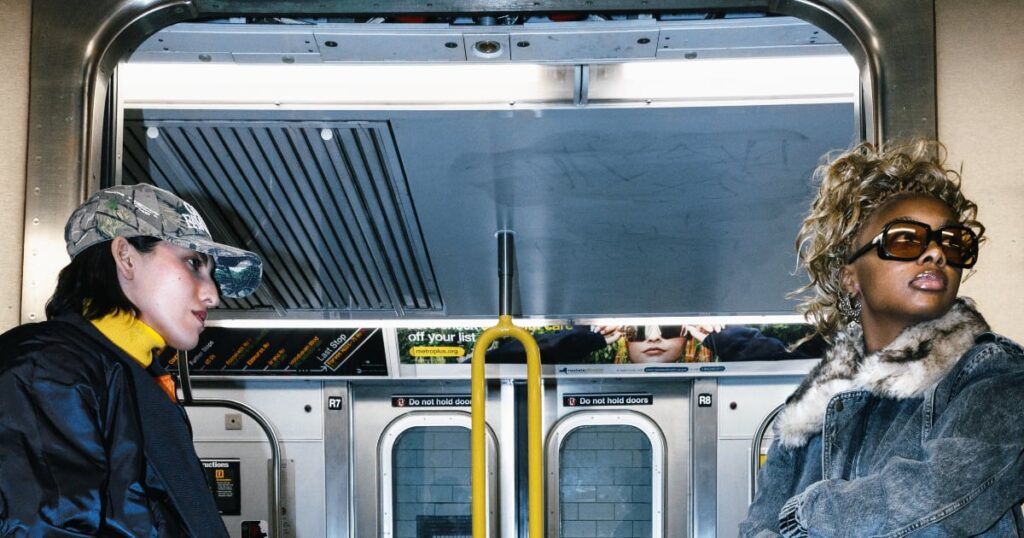The Intersection of Fashion and Running Culture: A Closer Look at Hoka’s Recent Activations
Abe Chavez, the fashion manager at the trendy New York luxury boutique ESSX, typically oversees relationships with high-profile clients such as NBA star Jaylen Brown and NFL player CeeDee Lamb. However, this week, his responsibilities expanded to leading a vibrant run club through Manhattan’s Lower East Side. This unique event marked the culmination of a three-day takeover by the running sneaker brand Hoka, strategically timed ahead of the renowned New York City Marathon.
The run club attracted a diverse group, including local influencers, trendy fashion enthusiasts, and even Brooklyn-born rapper Theophilus London. For those less inclined to run, ESSX co-founder Laura Baker guided a cultural walking tour, showcasing the neighborhood’s rich history and creative scene. This shift in focus illustrates how luxury boutiques are increasingly embracing running culture, once considered an unconventional partnership.
The intersection of fashion and athleticism has evolved dramatically in recent years. It’s now common for luxury brands to integrate running activities into their marketing strategies. From opening flagship stores with running clubs to networking events at fashion weeks that commence with morning runs, the fusion of fitness and fashion has become an integral part of brand identity. Marathons, in particular, present a significant marketing opportunity for brands eager to promote exclusive merchandise to dedicated running enthusiasts.
The buzz surrounding this year’s New York City Marathon exemplifies this trend, featuring an array of activities reminiscent of fashion week, including pop-up stores and fitness events. Brands like Bandit, known for its stylish running gear, have introduced collaborations with Asics while hosting pre-race warm-ups at their pop-up locations. Minted New York has joined the conversation, revealing a special sneaker collaboration with Saucony, highlighting the prevalence of cross-industry partnerships that leverage marathon excitement.
In a notable first, this year’s marathon introduced an official beauty partner, with Maybelline setting up cheer zones and makeup stations staffed by celebrities such as actress Claire Holt. The addition of beauty-focused events further underlines the blending of lifestyle and performance within running communities, appealing to consumers with varying interests beyond just athleticism.
According to industry insiders, events like the New York City Marathon attract a mix of serious athletes and casual consumers eager to showcase trendy, high-end running attire. “It may as well be Paris Fashion Week,” says Yazmin Johnson, a London-based stylist and runner. The implications are clear: brands must strike a balance between genuine engagement with the running community and appealing to fashion-conscious consumers who prioritize aesthetic qualities.
Moreover, brands are increasingly mindful of how they approach the running niche. According to Tayler Willson, a seasoned marathon runner and brand consultant, superficial marketing tactics can backfire as consumers are quick to criticize brands that appear to opportunistically capitalize on trends. The current landscape demands an authentic connection with both marathoners and trendsetters alike.
Brand Partnerships and Sustainable Engagement Strategies
The ongoing collaboration between Hoka and ESSX serves as an exemplar of how brands can connect with emerging consumer demographics. By engaging with local retailers known for their trendsetting clientele, Hoka aims to resonate with a younger audience that values both performance and stylish aesthetics. ESSX’s Baker emphasizes that these fashion-forward consumers are deeply invested in their fitness communities, making them key targets for brands looking to make a lasting impact.
As the running landscape continues to grow and evolve, with fervent communities pushing for authentic representation, it is clear that this cultural crossover is far from a mere trend. With marathons providing a platform for connection, brands can leverage these events to cultivate relationships with consumers long after the finish line. In New York, every street transforms into a runway, underscoring the shift towards an inclusive culture where fashion and functionality seamlessly coexist.
The dynamic interplay between running enthusiasm and stylish apparel offers a promising avenue for brands aiming to establish longevity in the fitness market. As witnessed during recent activations, the demand for high-quality performance gear infused with a sense of style is stronger than ever. The future looks bright for brands that authentically engage with their audience, ensuring they stand out in a vibrant and growing market.
For more insights into the latest trends in athletic fashion, visit Business of Fashion.
